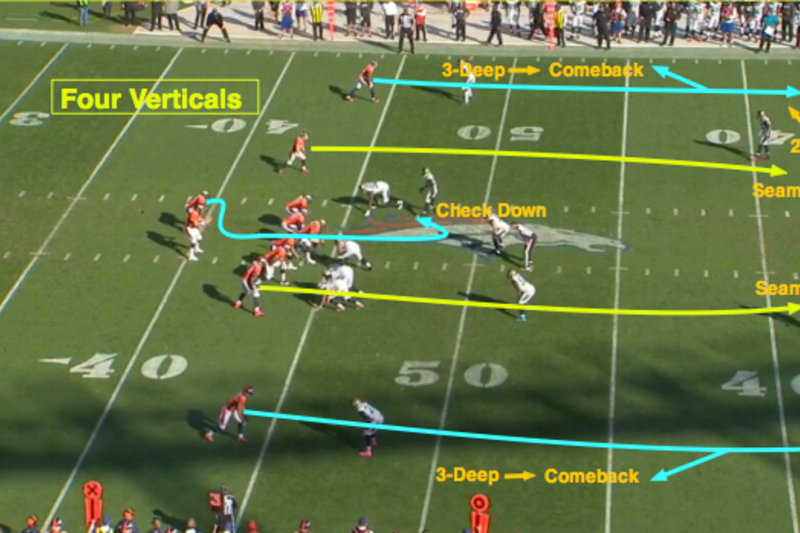A “Gld” in football can be confusing. It actually stands for “Goal Line Decision.”
This term is crucial in the sport, helping referees make accurate calls. Football is a game of precision and passion. Every goal scored can change the course of a match. This is where Goal Line Technology (GLT) steps in. It ensures that every goal decision is clear and fair.
GLT uses advanced technology to help referees determine if the ball has fully crossed the goal line. This technology reduces human error and maintains the integrity of the game. Understanding how GLT works can enhance your appreciation of football. Dive in to learn more about this fascinating aspect of the sport.
Role Of Gld In The Game
The term GLD in football stands for Goal Line Decision. It is a crucial aspect of modern football. It ensures that goals are accurately determined. This technology has transformed how referees make decisions on the pitch. Understanding the role of GLD helps appreciate its impact on the game.
Game Dynamics
GLD technology enhances the dynamics of the game. It provides instant feedback to referees. This reduces stoppages and keeps the game flowing. Fans and players benefit from quick and accurate decisions.
Here’s how GLD affects game dynamics:
- Instant goal verification
- Reduced human error
- Maintains game pace
With GLD, referees get alerts on their watches. This happens when the ball crosses the goal line. Such precision was impossible before GLD. It makes the game fairer and more enjoyable.
Impact On Strategies
GLD also impacts team strategies. Coaches and players now rely on this technology. They know every goal will be accurately judged. This changes how they approach scoring opportunities.
Consider these strategic impacts:
- Enhanced attacking confidence
- More aggressive goal attempts
- Improved defensive tactics
Teams are now more strategic near the goal. They push harder, knowing GLD ensures fairness. Defenders also adapt, knowing their clearances are accurately judged. This balance of attack and defense leads to a better game.
| Aspect | Impact |
|---|---|
| Referee Decisions | More accurate |
| Game Flow | Fewer stoppages |
| Team Strategies | More aggressive play |

Credit: www.tiktok.com
How Gld Is Measured
Understanding how Goal Line Decision (GLD) is measured is crucial in football. This technology ensures fair play and accurate decisions. By knowing the metrics and technology used, fans can appreciate the game’s integrity.
Metrics And Parameters
Several metrics and parameters determine if a goal is legitimate. The primary parameter is the ball’s position. It must fully cross the goal line. Sensors track this movement with high precision. These sensors measure the ball’s speed and direction. Another key metric is the ball’s trajectory. Cameras analyze the ball’s path to ensure accuracy. This data is crucial for making the right call.
Technology Used
Modern technology plays a big role in GLD. Hawk-Eye is a popular system. It uses multiple cameras around the goal. These cameras capture the ball’s position in real-time. Another technology is GoalControl. It uses high-speed cameras. These cameras are mounted on the crossbar and posts. The system processes the data instantly. It then sends a signal to the referee’s watch. This technology eliminates human error. It ensures the right decision every time.
Examples Of Gld In Action
Goal Line Decisions (GLD) have shaped some of the most thrilling moments in football history. Whether determining the outcome of a pivotal match or highlighting the prowess of notable players, GLD plays a crucial role. Let’s explore some famous matches and notable players where GLD has made a significant impact.
Famous Matches
Certain matches are etched in our memories due to goal line decisions. Here are some famous examples:
- 2010 FIFA World Cup – England vs. Germany: Frank Lampard’s disallowed goal is a classic GLD case. His shot crossed the line but was not awarded.
- 1966 FIFA World Cup Final – England vs. West Germany: Geoff Hurst’s controversial goal remains debated. The ball hit the crossbar and bounced down. Was it a goal?
- 2014 FIFA World Cup – France vs. Honduras: Technology confirmed a goal after Karim Benzema’s shot. This was one of the first uses of GLT in the World Cup.
Notable Players
Some players have been pivotal in matches involving goal line decisions. Let’s look at a few:
| Player | Match | Impact |
|---|---|---|
| Frank Lampard | 2010 FIFA World Cup | Disallowed goal against Germany |
| Geoff Hurst | 1966 FIFA World Cup Final | Controversial goal in final |
| Karim Benzema | 2014 FIFA World Cup | First GLT goal confirmation |
These players and matches highlight the importance of goal line decisions in football. They can change the course of games and careers.

Credit: www.instagram.com
Gld And Team Performance
Understanding GLD (Goals Lost Due to Defense) can improve team performance. Teams often analyze GLD to identify weak spots in defense. Improving these areas can lead to fewer goals conceded.
Statistical Correlations
Teams use statistics to understand GLD better. Data shows a high GLD often means poor team performance. Coaches focus on reducing GLD to boost overall performance.
For example, teams with fewer GLD usually rank higher in leagues. This correlation helps teams set goals for better defense. Statistics provide clear targets for improvement.
Performance Analysis
Analyzing GLD helps teams refine their defense strategies. Coaches review game footage to spot defensive mistakes. This helps in planning better defensive drills in practice sessions.
Performance analysis includes player positioning and response to attacks. Players learn from these insights to avoid repeating errors. Continuous analysis ensures steady improvement in defense.
Teams also compare GLD with other teams. This comparison highlights areas that need more focus. Learning from top-performing teams can inspire new defensive strategies.
Coaching With Gld
Coaching with GLD, or Game-Like Drills, enhances football training. These drills simulate real game scenarios. They help players improve their skills in a realistic setting. Coaches use GLD to better prepare their teams for matches.
Training Methods
GLD training methods focus on replicating actual game situations. These include passing under pressure and quick decision-making. Players practice in a way that mimics real match conditions. This increases their adaptability and performance during games.
Another method includes small-sided games. These games emphasize teamwork and communication. They also allow players to work on their positioning and spatial awareness. Small-sided games are intense and improve fitness levels.
Tactical Adjustments
GLD helps coaches make tactical adjustments more effectively. During these drills, coaches can assess players’ strengths and weaknesses. They can then make necessary changes to the team’s tactics. This helps in optimizing team performance.
For example, if the defense struggles, coaches can simulate defensive scenarios. This allows players to practice specific defensive strategies. Over time, these adjustments can significantly improve the team’s overall defense.
Challenges With Gld
Goal-line technology (GLD) in football has revolutionized how goals are judged. But it also presents several challenges. These can impact the fairness and accuracy of the game. Let’s explore some of these challenges.
Accuracy Issues
Accuracy is crucial for GLD. Errors can lead to unfair outcomes. Sometimes, the technology fails to detect the ball’s exact position. This can happen due to technical glitches or signal interference. Inaccurate readings may result in wrong decisions. It can frustrate players and fans alike.
Table below shows common causes of accuracy issues:
| Cause | Impact |
|---|---|
| Signal Interference | Incorrect ball position |
| Technical Glitches | Misjudged goals |
| System Malfunctions | Delayed decisions |
Controversial Decisions
Despite its purpose, GLD can lead to controversial decisions. Sometimes, the technology gives borderline results. These are hard to accept by teams and fans. For instance, a goal might be awarded even if the ball barely crossed the line. This can create disputes and heated arguments.
Consider the following examples of controversial scenarios:
- Ball crossing the line by a few millimeters
- Decisions during crucial moments of the game
- Disagreement between GLD and referees’ judgment
Such controversies can undermine the trust in GLD. It is essential to address these challenges to ensure the integrity of the game.
Future Of Gld In Football
The Future of GLD in Football is exciting and full of potential. As technology evolves, the role of Goal Line Decision (GLD) systems in football is set to change. Understanding these changes helps fans and players alike stay informed and prepared for what’s ahead.
Technological Advancements
Technological advancements will play a key role in the future of GLD in football. Improved sensor technology can offer more accurate readings. This ensures that every goal decision is correct.
Artificial Intelligence (AI) might also come into play. AI can analyze game data in real-time. This helps referees make quick and accurate decisions.
Another area of development is wearable technology. Players could wear devices that track their positions on the field. This data can integrate with GLD systems for more accurate goal decisions.
Potential Changes In Rules
Future rules may adapt to new GLD technologies. One possible change is the inclusion of GLD reviews. Referees might use instant replays to double-check goal decisions.
Another potential change is the use of automated systems. These systems could replace some human decisions. This reduces human error and increases fairness in the game.
GLD systems might also become mandatory in all professional leagues. Currently, only top leagues use these systems. Making them mandatory ensures a level playing field for all teams.
With these changes, football fans can expect a more accurate and fair game. The future of GLD in football is bright, promising exciting advancements and fair play.

Credit: www.gld.com
Frequently Asked Questions
What Is A Goal In Football?
A goal in football is scored when the entire ball crosses the goal line between the goalposts and beneath the crossbar.
How Is A Goal Scored In Football?
A goal is scored when the ball completely crosses the goal line, provided no rules are violated.
What Happens After A Goal In Football?
After a goal is scored, the game restarts with a kickoff from the center of the field by the opposing team.
Can A Goalkeeper Score A Goal?
Yes, a goalkeeper can score a goal if they play the ball into the opponent’s net during open play.
Conclusion
Understanding what a goal is in football helps you enjoy the sport more. Goals are the main objective. They bring excitement and define the outcome. Watching how players work together to score can be thrilling. Now, you can appreciate the strategies and skills involved.
Football becomes more engaging when you know the basics. Next time you watch a match, you’ll have a better grasp of the game. Enjoy the action and cheer for your favorite team!





